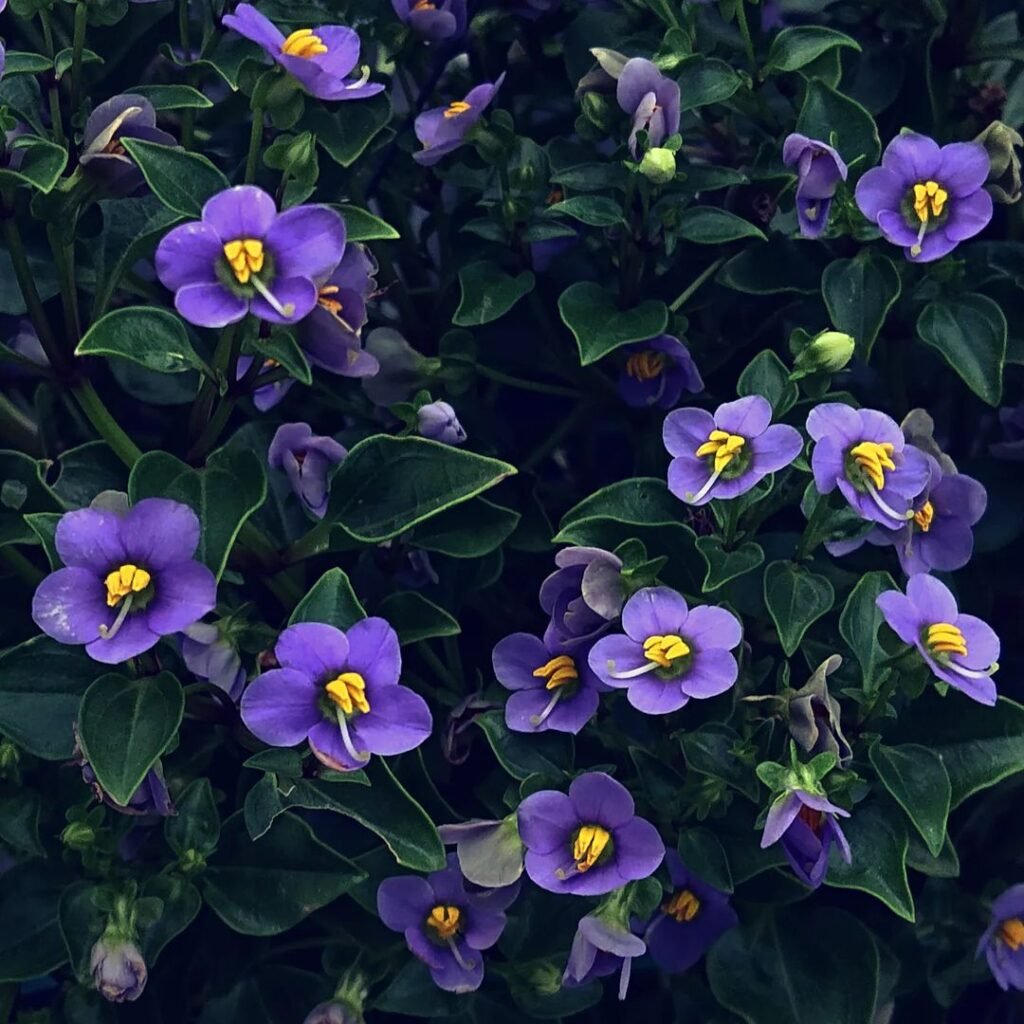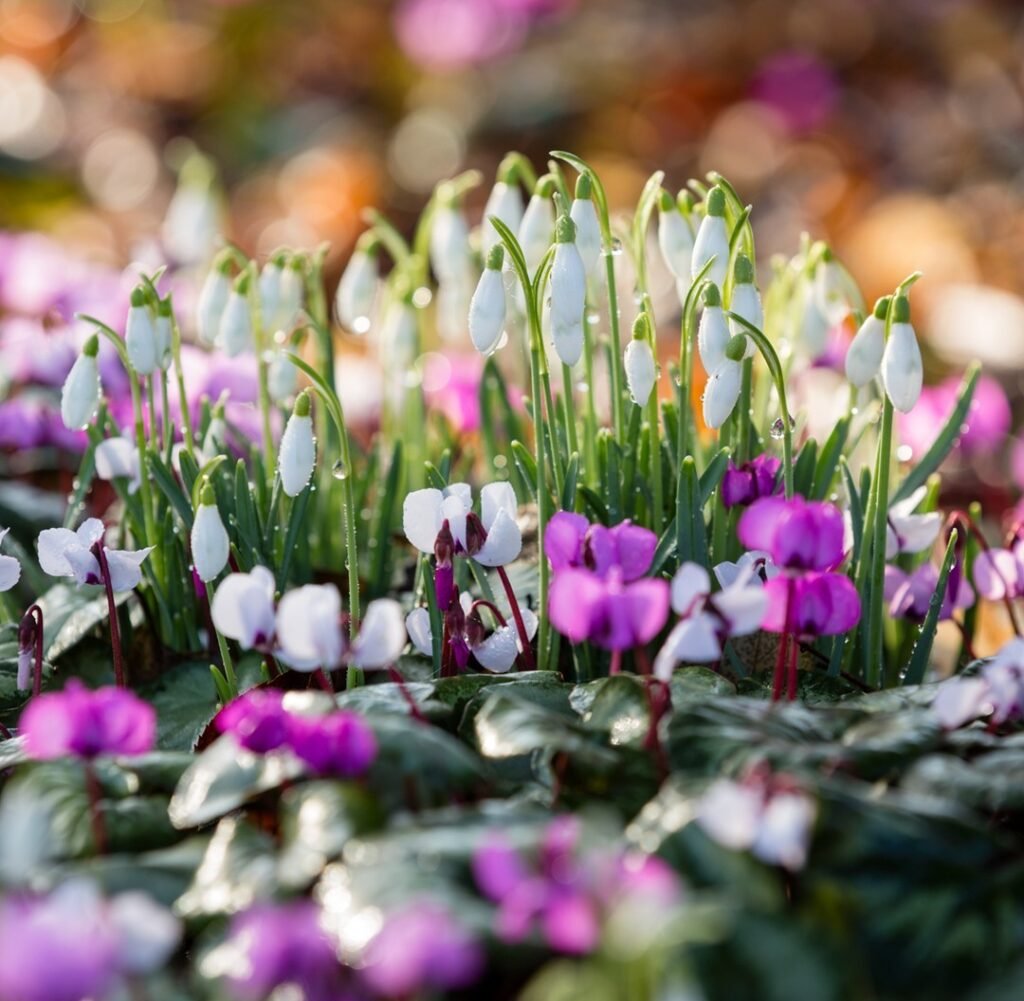Lady plants, also called Persian violets, are ideal indoor flowering houseplants. Get comprehensive care tips on light, soil, watering and more to grow thriving lady plants.
The lady plants, also called a Persian violet, is a beautiful flowering houseplant that can bloom almost continuously. With its fuzzy leaves and cheerful blooms in shades of pink, purple, or white, it makes a charming addition to any home.

While quite delicate in appearance, the lady plant is surprisingly hardy and forgiving when given the right care. By providing the ideal conditions, you can enjoy the long-lasting flowers and lush foliage of this pretty plant all year round.
In this guide, we’ll cover everything you need to know to successfully grow and care for lady plants indoors.
What is a Lady Plant?

The lady plant’s scientific name is Saintpaulia ionantha. It’s a tropical perennial herb that is native to the coastal forests of eastern Africa. Lady plants are members of the African violet family (Gesneriaceae) and are related to Streptocarpus, another popular flowering houseplant.
Lady plants grow Low to the ground with a rosette of fuzzy, oval-shaped leaves that can reach 4-6 inches across. The leaves have a crinkled, ruffled texture that is very appealing.
The real showstopper is the lady plant’s vibrant blooms that seem to dance above the leaves on slender stems. Flowers come in a wide range of solid or bicolored shades, including pink, purple, red, blue, lavender and white varieties. Blooms can last for several months with the right care.
Why Grow Lady Plants?

There are many great reasons to add a lady plant to your indoor plant collection:
- They are non-toxic to pets and humans
- Easy to grow and very low maintenance
- Bloom almost continuously when happy
- Available in many beautiful colors
- Compact size is perfect for small spaces
- Can live for many years with proper care
With their prolific flowering, lady plants make wonderful indoor ornamental plants to brighten up any room. They also make great low-light houseplants for bathrooms, offices or other rooms with limited sunlight.
Choosing a Healthy Lady Plant
When selecting a lady plant, look closely at the foliage and flowers. Avoid plants with damaged, dried or yellowing leaves. The leaves should appear plump, glossy and uniform in size and shape.
Inspect the flowers as well – you want lots of large, fresh blooms that are evenly spaced around the plant. Steer clear of spindly, leggy plants or ones with a lot of dead flowers or leaves at the base.
It’s also a good idea to check that the plant is free of pests like mites, mealybugs or fungus gnats. Look under leaves and in the soil for any signs of bugs.
With the right plant, you’ll be able to enjoy lush growth and prolific blooms for a very long time.
Planting Lady Plants
Lady plants have very particular soil and potting needs. Using the proper soil mix and containers can mean the difference between success and failure.
Soil Unlike most houseplants, lady plants need a very loose, well-draining soil mix. A standard potting mix will hold too much moisture. Instead, use one of these options:
- Commercially available African violet soil mix
- Equal parts peat moss, perlite and vermiculite
- 1 part peat moss, 1 part vermiculite, 1 part bark
- 1/3 potting soil, 1/3 perlite, 1/3 vermiculite
Pots Lady plants have very delicate root systems that are prone to rot if soil stays too wet. For this reason, use containers with plenty of drainage holes in the bottom. Terracotta, plastic or glazed ceramic pots are all good options.
Choose a pot just 1-2 inches wider than the current rootball. Lady plants prefer to be potbound and will become stressed in an overly large container holding too much moisture.
When potting or repotting, gently knock the plant from its existing container and remove any dead roots or spent soil from the rootball. Position the plant so that the crown (where the leaves emerge) sits just above the soil surface.
Water and Fertilize Lady plants like their soil to partially dry out between waterings. Water thoroughly by applying room temperature water from the top until it runs out the drainage holes. Then, allow the soil to dry out just slightly before watering again.
Fertilize monthly during the spring and summer growing season with a balanced liquid fertilizer diluted to 1/4 strength. Cut back to every 2-3 months over the winter.
Light Requirements
Lady plants can tolerate a range of light conditions, but prefer bright, indirect light. An east or west facing window is ideal, or you can position them several feet back from a south window.
Too much direct sun will scorch the leaves and cause the plant to shut down bloom production. On the flip side, not enough light will cause sparse flowering and leggy growth as the plant stretches for more light.
Look for signs the light is not quite right like:
- Bleached or faded leaves = Too much sun
- Dark green, thin leaves = Not enough light
- Center leaves twisting = Not enough light
- Leaning stems = Not enough light
Most homes provide sufficient light for these plants, as long as they are not tucked away in a dim corner. Move them around until you find that sweet spot of bright, indirect illumination.
Temperature and Humidity
Lady plants like it on the warmer side with temperatures ideally between 65-80°F during the day and no lower than 60°F at night. Avoid drafts, dry air from heaters, and sudden temperature changes.
Moderate to high humidity around 50-60% is also preferred, though most household humidity is usually sufficient. You can increase humidity by using a pebble tray or small humidifier near your plants.
Signs of low humidity include crispy brown leaf tips and edges. A lack of flowers can also indicate overly dry air.
Dealing with Problems
While relatively low-maintenance overall, lady plants can sometimes experience a few common problems. Here’s how to identify and treat the most frequent issues:
Leaf Problems
- Yellowing Leaves: Usually caused by overwatering, cold drafts, low humidity or excess fertilizer. Allow soil to dry slightly between waterings and increase humidity.
- Brown Crispy Leaves: A sign of low humidity. Use a pebble tray or mist leaves frequently.
- Small Leaves: Either due to high temps, too little light, or overly dry conditions. Adjust accordingly.
Blooming Problems
- No Flowers: Could indicate too little light, excess nitrogen fertilizer, nighttime temps below 60°F or overly dry air.
- Faded Flowers: Usually caused by too much direct sunlight. Move plant to a slightly shadier spot.
- Green Flowers: A signal of too little light for bloom production. Increase light exposure.
Crown and Root Issues
- Crown Rot: Caused by overwatering or cold temps. Stop watering and provide warmth/airflow to dry out.
- Soft Brown Base: Sign of a rotting crown due to moisture and lack of air circulation. Unpot and remove rot.
- Circling Roots: Rootbound plants need repotting into a slightly larger container. Don’t go too big.
Pests
- Cyclamen mites: Microscopic pests that cause twisted, deformed growth. Use insecticidal soap or neem oil.
- Mealybugs: Cotton-like bugs on stems and undersides of leaves. Treat with rubbing alcohol.
- Fungus gnats: Small flies indicate overly wet soil. Allow to dry out between waterings.
With some troubleshooting, most common lady plant problems are easily remedied. Don’t get discouraged – these plants are resilient when their core needs are met!
Getting Lady Plants to Rebloom
With their ability to flower almost non-stop, lady plants are among the most prolific bloomers out there. But sometimes getting them to rebloom after a rest period requires a little extra effort.
Here are some tips to encourage plentiful blooms:
- After initial blooms fade, cut off dead flowers at the base
- Fertilize monthly with a balanced liquid fertilizer during the growing season
- Provide bright, indirect light – at least 6 hours per day
- Allow soil to dry slightly between waterings
- Increase humidity around the plant
- Give plants a rest period of 6-8 weeks with cooler temps around 55°F
The rest period helps reset the plant’s flowering cycle. After 6-8 weeks, increase temps, light, humidity and resume regular watering and fertilizing. You should see new buds forming within 4-8 weeks.
Another option to restart blooming is to divide an overgrown plant into two or more sections in the spring. This rejuvenates the plant and stimulates new growth and flowering.
Propagating Lady Plants
One of the best things about lady plants is how easy they are to propagate from cuttings or offsets. This allows you to start new plants for free from an existing healthy mother plant.
There are two main methods for propagating lady plants:
Leaf Cuttings
- Use a sharp, sterile knife to cut off a healthy leaf as close to the plant’s base as possible
- Allow the cut end of the leaf stem to callous over for 24 hours
- Fill a small pot or tray with moistened seed starting mix
- Insert the leaf vertically into the mix, ensuring the base is covered
- Place in a warm, bright spot and keep the soil lightly moist
- Roots and a new plantlet will eventually emerge from the soil
- Once established, transplant into a permanent pot
Plant Division
- Choose a large, overgrown mother plant and unpot it
- Gently break or cut apart the root system into 2 or more sections
- Each section needs a piece of the crown and some roots attached
- Pot up the divisions into their own containers with fresh soil
- Keep lightly moist and provide bright, indirect light
- New growth should soon emerge as the plants establish themselves
Both methods work well for easily propagating new lady plants. Dividing an overgrown plant is also a way to rejuvenate an older, straggly looking specimen.
Lady Plant Varieties
While all lady plants belong to the species Saintpaulia ionantha, there are many beautiful cultivars available in a rainbow of colors and patterns. Some popular variety types include:
- Standard: Solid colored flowers in shades of pink, purple, red, blue, lavender or white
- Multicolor: Flowers with contrasting edges, streaks or fantasy markings
- Miniature: Very small, compact growth habit
- Trailing: Stems that drape and trail over containers
- Semi-double: Each bloom has an extra layer of petals
Some specific award-winning or noteworthy lady plant cultivars include:
- Rob’s Chuckles: Bright fuchsia semi-double blooms
- Heavenly Sunray: White flowers with bright yellow centers
- MA’s Trails: Trailing stems with lavender and purple blooms
- Antarctic Sailor: Pure white flowers with green edges
- Skytrail: Deep blue flowers with purple edges
With so many gorgeous colors, patterns and plant forms available, it’s easy to start a whole collection of lady plants! Growing them successfully just takes meeting their basic care needs.
By following the tips in this guide, you’ll be able to enjoy an indoor garden full of lush, flowering lady plants all year round. With their low-maintenance routine and prolifically blooming nature, these charming plants are sure to delight!
Pingback: How to Grow and Care for Elephant Ear Plants -
Pingback: How to Grow Lots of Ginger in Containers -
Pingback: Monstera Obliqua: A Guide to Caring for the Elusive Delight
Pingback: Spice Up Your Indoor Space with the Trendy Hanging Jellyfish Air Plant
Pingback: How to Grow and Care for Peace Lily Plants: A Complete Guide
Pingback: How to Get Rid of Thrips Effectively : A Comprehensive Guide
Pingback: Growing and Caring for Beautiful Bird’s Nest Ferns - Gardener's School
Pingback: All About Aglaonema Plants : Care Tips for Gorgeous Greenery